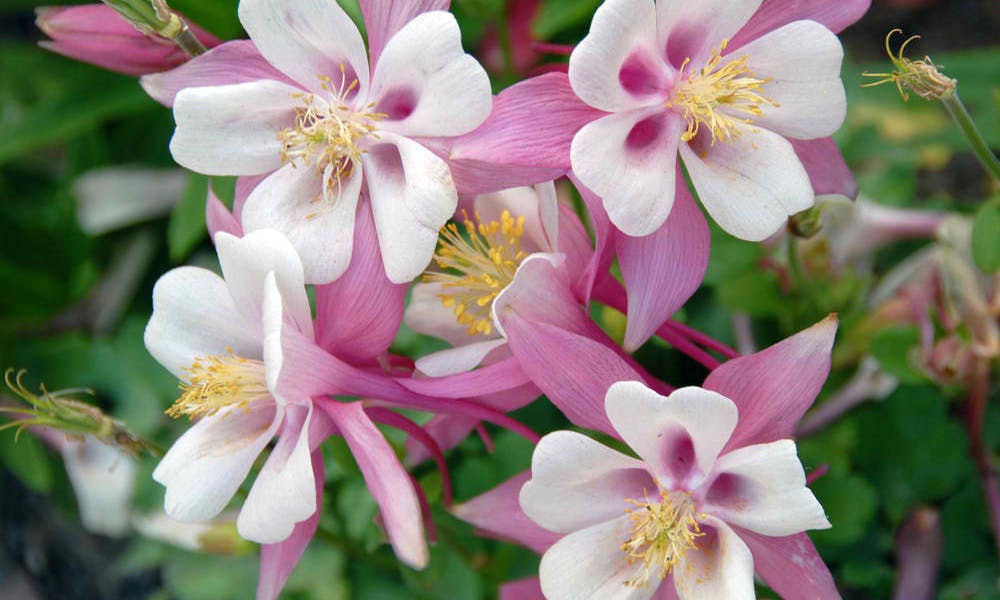Columbine flowers are not the most popular out there. You are more likely to hear about others, such as lilies and roses. Be that as it may, these flowers are like hidden gems. They can bring an incredible element of beauty to your garden.
To some, these flowers are also called Granny’s Bonnet. They are characterized by their spurred flowers that are bell-shaped. These flowers have a wide color range, which includes purples, oranges, yellows, reds, and even bi-colors. There are over 70 species in total, and the information you get here applies to just about all of them.
Speaking of that information, here’s a look at what you can expect to learn as you read:
- Planting columbine flowers
- Caring for columbine flowers
- Recommended types of columbine flowers
- Pests and diseases to consider
- Facts about columbine flowers.
Without further ado, it’s time to dive in!
Planting Columbine Flowers
Of course, when you are planting a flower, great care must be taken. If you don’t meet the flower’s needs, then you can expect disappointment. Here is what you need to know about the columbine flower’s planting process.
These flowers are not picky where light is concerned. They thrive in both sunny and shaded conditions. It’s best for you to begin by sowing seeds indoors first. Do this for six to eight weeks prior to putting them into their beds.
Speaking of beds, the beds must be filled with rich soil that has been well-drained. Ensure that you press the flower seed into the prepared soil, but do not cover it.
If you are going to be making this a container plant, ensure the hole you dig is twice the pot’s diameter. The top of the root ball should be level with the soil surface. Ensure to water thoroughly.
Caring for Columbine Flowers
Columbine flowers do not come under the category of low maintenance. However, they also do not require a crazy amount of attention to thrive. Follow the tips below, and you should be good to go.
Overwatering should never occur. If the soil appears to be dry, then that is the only time you need to water the plants. If you go overboard, you could cause the plants to rot.
Deadhead all faded flowers. This allows new buds to properly develop along the flower’s stems. Bloom season extension is possible for up to six weeks. This period extends into mid-summer.
During the fall season, it is recommended that you cut back the foliage to the ground. Finally, there is the matter of frozen ground. When the ground is in an icy state, mulching is necessary for columbine plant protection.
Once you follow those simple care procedures, you should have healthy flowers.
Recommended Types of Columbine Flowers
While there are over 70 varieties of columbine flowers, some are more recommended for domestic application than others. This is for reasons of conditions and difficulty. The information here can be applied to most varieties, but these are the optimal ones.
First, there is the Swan series. This variety is known for its many bi-color hybrids. The most common among them are the red and white and the pink and yellow variations.
Next, there is the European columbine, which is also known as the “William Guinness.” These are known for their purple-black outer petals and their white-rimmed inner ones.
Finally, there is the Eastern red columbine. This one is native to the North American region. There are unique and hollow elongated tubes within the plant. These tubes all point upward. Examples of this variety are the “Corbett” and the “Little Lanterns.”
Pests and Diseases to Consider
Powdery mildew is your only concern as far as diseases go. You can tell when the plant is infected as it appears to have been dusted with flour. Using organic fungicides and removing infected parts can fight the condition.
Leaf miners are the only pests that cause an issue. A general insecticide is effective in dealing with these insects.
Facts about Columbine Flowers
A couple of facts is the last thing to be looked at in this review.
First, there is the columbine flower’s Latin name. The name is “Aquilegia,” and it is derived from the Latin word “Aquila.” This is simply the Latin word for eagle. This name was selected because of the longs spurs that you can find behind the flower petals. These are known to bear a striking resemblance to the claws of an eagle.
Second, Native Americans were heavy users of the columbine plant seeds and roots. However, they were usually used in a crushed form. The crushed seeds were used in medical applications, as well as love charms.
The roots and seeds were used in the treatment of illnesses such as sore throats, headaches, and heart problems. In their crushed form, the seeds and roots seemed to be brimming with healing properties.
Summary
The columbine flower is not as popular as many of the other more popular flowers. However, they give gardens a unique beauty when they are implemented.
Seeds are best sown indoors six to eight weeks prior to bed sowing. These beds must be well prepared prior to sowing. Note that the plants can thrive in both shade and sunlight.
Try not to overwater the plants as you can cause them to rot. Cut back foliage to the ground during fall, and deadhead faded flowers.
The three recommended columbine flower varieties are the Eastern red columbine, the swan series, and the European columbine.
Not many pests or diseases afflict this plant. However, you should watch out for powdery mildew and leaf miners.
The plant gets its Latin name from the Latin word for eagle due to the claw-like appearance of its spurs. Native Americans crushed the seeds and medicine for romantic and medicinal purposes.
